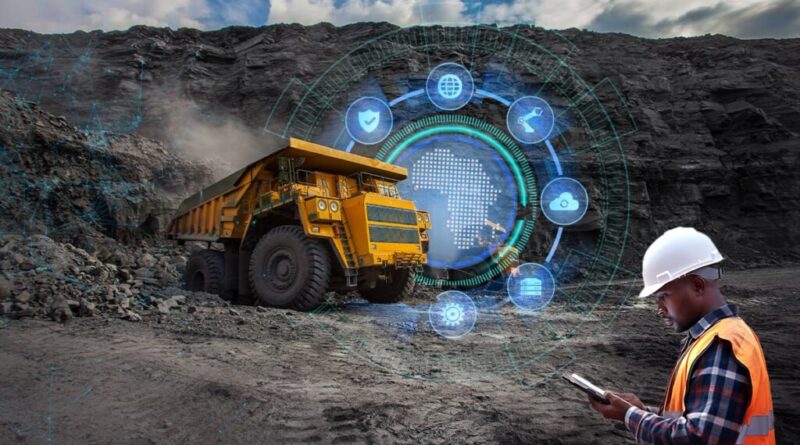Exploring the Future of Mining Training: How Traditional, Digital, and Virtual Methods Shape Safety and Productivity
Training miners has always been a critical in the industry. Ensuring that workers are prepared to handle complex tasks in hazardous environments is a must. While traditional training remains a cornerstone, the rise of digital solutions and immersive technologies like Virtual Reality (VR) is transforming how mining companies approach workforce development. In this article, we’ll compare traditional training methods, e-learning, and VR-based training solutions. Each of these offers unique advantages striving to balance safety, efficiency, and cost-effectiveness.
Traditional Training: The Foundation of On-Site Experience
On-site, in-person training has been the dominant method in the mining industry for decades. It involves long and boring classroom sessions followed by physically taking new workers into real mines, under the supervision of experienced personnel. This exposes the new miners to the environment, equipment, and safety protocols while remining somewhat safe. This approach has several advantages:
- Real-world learning: Trainees experience the conditions they will face underground, learning how to operate equipment and interact with colleagues in an actual mine setting.
- Direct mentorship: Senior miners provide hands-on guidance, sharing real-life lessons and experience in a way that can’t be fully replicated digitally.
However, on-site training has significant drawbacks:
- Safety risks: The very nature of mining environments—underground, often in remote locations—makes on-site training risky. Exposing inexperienced workers to hazards increases the likelihood of accidents.
- Costly and resource-intensive: Training in operational mines can halt productivity and require a lot of resources, including machinery, trainers, and site preparations.
E-Learning: Digital Convenience with Limitations
E-learning has gained momentum in the mining industry, particularly for theoretical instruction, regulatory compliance, and basic technical skills. Online courses provide interactive learning experiences that can be accessed from anywhere, allowing mining companies to provide uniform training without requiring workers to travel to centralised locations.
The main benefits include:
- Cost-efficiency: E-learning modules can be developed once and used repeatedly across different teams, reducing the need for constant re-training.
- Remote accessibility: Miners, especially those working in geographically distant or remote locations, can benefit from learning at their own pace and on their own schedule.
Despite its advantages, e-learning has its downsides:
- Lack of practical exposure: No matter how well-designed an e-learning program is, it cannot replicate the physical experience of operating heavy machinery or navigating a mine.
- Engagement challenges: Many workers in hands-on industries like mining find digital learning platforms disengaging compared to more interactive or practical methods.
Virtual Reality (VR) Training: A Safer, More Immersive Experience
Virtual Reality (VR) is fast becoming the next frontier in mining training (comprehensive report on VR uses in mining). By placing trainees in fully immersive, simulated environments, VR replicates the high-risk conditions of a mine without any of the associated dangers. Mining companies like Rio Tinto and Debswana Mines have already integrated VR training into their operations, allowing workers to master complex tasks, like equipment handling or emergency response, in a safe and controlled virtual environment.
The key advantages of VR training include:
- Immersive learning: VR simulates the full sensory experience of being in a mine, allowing workers to engage in high-risk tasks like operating explosives or heavy machinery without actual risk.
- Unlimited repetition: Workers can repeat dangerous tasks multiple times until they are confident, all without the risk of injury or equipment damage.
- Data collection and feedback: Advanced VR systems track user interactions, providing feedback on how well trainees performed in their virtual tasks, making it easy to monitor progress and pinpoint areas that need improvement.
The challenge with VR, used to be the initial investment in technology and training modules. This is now changing. While developing fully customised VR training programs still is a cost it no longer is prohibitively expensive and rather affordable for most businesses. However, if we look at the long-term benefits of VR training — reduced accident rates, enhanced productivity, and faster onboarding — the business case starts to stack up rather nicely.
Combining the Best of All Worlds
The future of training in the mining industry will likely involve a hybrid approach, combining traditional on-site experience, digital e-learning, and immersive VR. This combination provides workers with theoretical knowledge, practical exposure, and the chance to simulate high-risk scenarios before facing them in real life.
For instance, companies could begin with e-learning modules for theoretical knowledge, followed by VR simulations to allow workers to practice handling equipment, and conclude with on-site training under the guidance of experienced miners.As more mining companies adopt VR technologies, PMC-VR stands out as a leading provider of cutting-edge VR solutions, offering tailored training programs that cater to the specific needs of the mining sector. From emergency preparedness to machinery operation, PMC-VR’s training solutions are designed to enhance both safety and productivity, making them an ideal choice for mining companies looking to upgrade their training methods.




